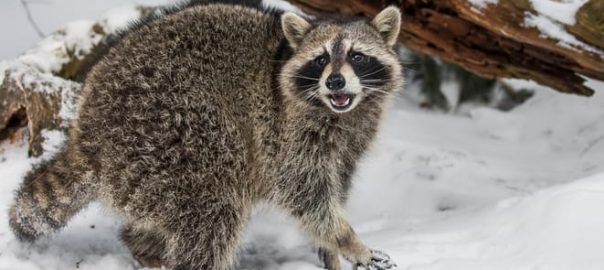Noises in the Attic – How to Identify Animals in Attic

You hear animal noises in the attic such as thumping, scratching or skittering and are the last thing you want to do is poke your head in to see what’s happening. Fortunately, it is fairly easy to identify animals living in your attic through other means besides doing a physical inspection of your attic.
Look out for the following signs to identify the offending animal;
Time of Day
You can narrow down your possible leads by simply considering the time of day you hear animal activity. Raccoons, mice, bats and rats are nocturnal creatures so you are most likely to hear them at night. Squirrels, on the other hand, are diurnal meaning they are active during the day. If you hear animal sounds during the day then you can almost always conclude you have a squirrel problem. Nighttime activity is a little more difficult to conclude.
Note: rabid raccoons may be active during the day.
Type of Noise
If you know what to listen out for then you can easily identify the animal from the noises it makes. Raccoon sounds will be heard primarily at night and often slow dragging or thudding. The animal movements will indicate that it is a large and heavy animal, closer to footsteps than scurrying.
You will typically hear squirrels around dawn and again at dusk. These critters appear to keep a schedule so you are likely to hear these noises around the same time daily. Squirrel movements sound erratic usually quick and scurrying noises.
Finally, the adage quiet as a church mouse isn’t far from the truth. Mice noises are typically far off chewing and scratching sounds only heard when the house is very quiet.
Type of Damage
You can inspect the exterior of your home to find possible access into your attic. These entry points can provide good leads to identify the animal.
Large entry holes and severe damage such as ripped ducts and damaged shingles indicate a larger animal such as a raccoon. Raccoons have strong, dexterous paws that easily tear and rip to gain access to the attic.
Squirrel damage tends to be smaller holes, usually about two inches wide. These entryways typically have gnawing signs around the perimeter.
Rat damage is much harder to detect as they can slip through holes as small as the tip of a ball-point pen. You are more likely to notice brown, greasy stains on walls along or leading to the entry point. Rats like to use the same ‘runways’ against the wall leaving distinct marks over time.
Type of Feces
You are likely to encounter animal feces in and around your property, usually on the roof or near entry points.
Raccoon feces are large and comparable to that of a medium-sized dog. The feces may contain berries. The average turd is about ¾ of an inch in diameter with rounded or broken-off tips.
Squirrel feces are about 3/8 inch in length with rounded ends and appear as small, brown pellets. The diameter is about 8 mm and cylindrical shaped. The feces may contain nuts and other similar debris and turns a lighter colour with age.
Rat poop is small, about ¼ inches and usually brown. The edges may be slightly rounded. The feces is usually scattered around rather than in piles as is common with most animals. The feces become chalky and dry with age.
Finally, mice feces are typically about 1/8 in length with slightly pointed ends. The feces are small and brown and are typically scattered like a rat’s rather than in piles. The poop also turns chalky and dry with age like a rat’s. The feces may be mixed with nuts or other debris.
What to Do About Animals in the Attic
Rodent and wildlife nests, feces and urine are toxic and can easily infect you and your family with serious and even fatal diseases. Hire a professional attic insulation removal service in Toronto to inspect the attic, identify the animal and remove it permanently.
The service also includes animal-proofing the entire house, cleaning, disinfecting and deodorizing after successful removal and repairing damage including replacing the insulation.